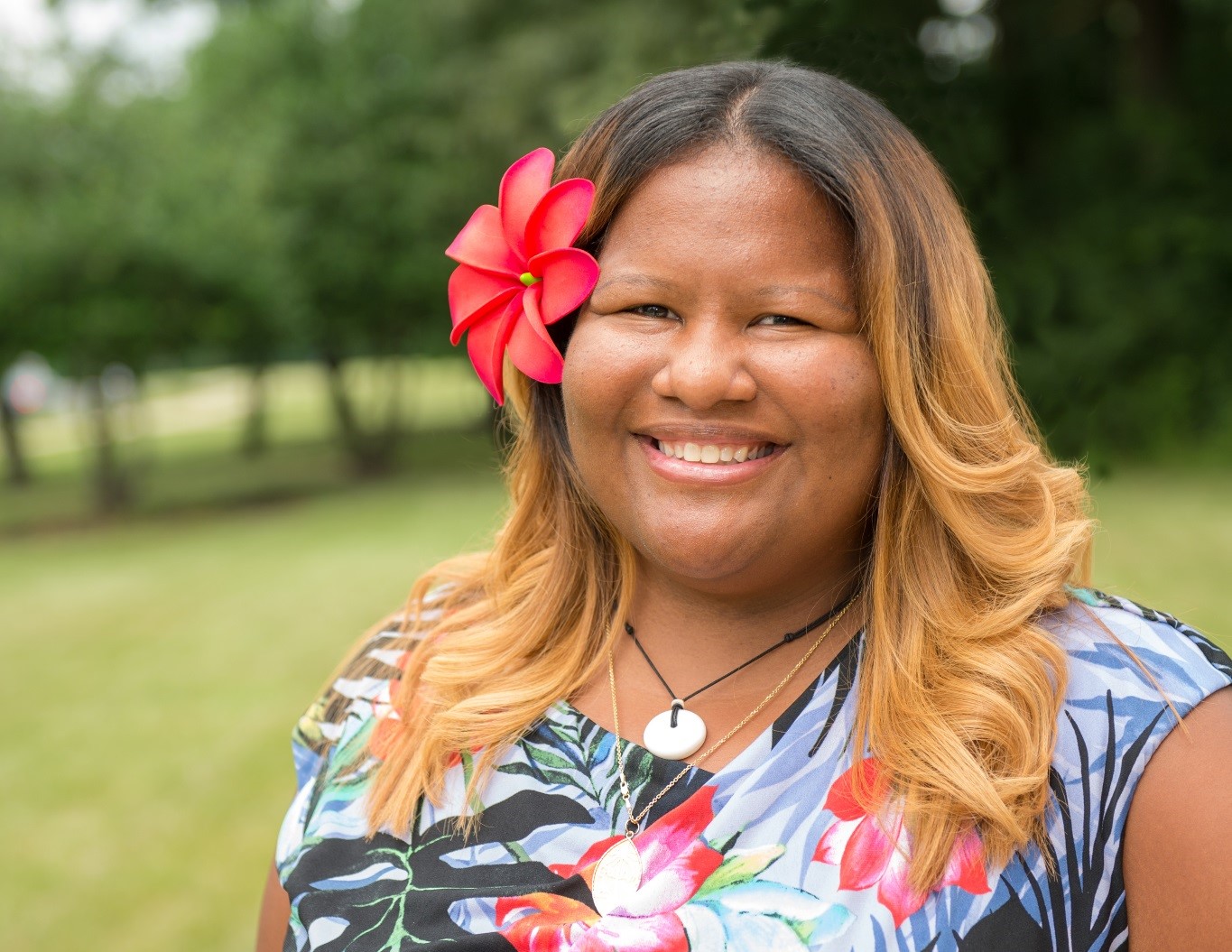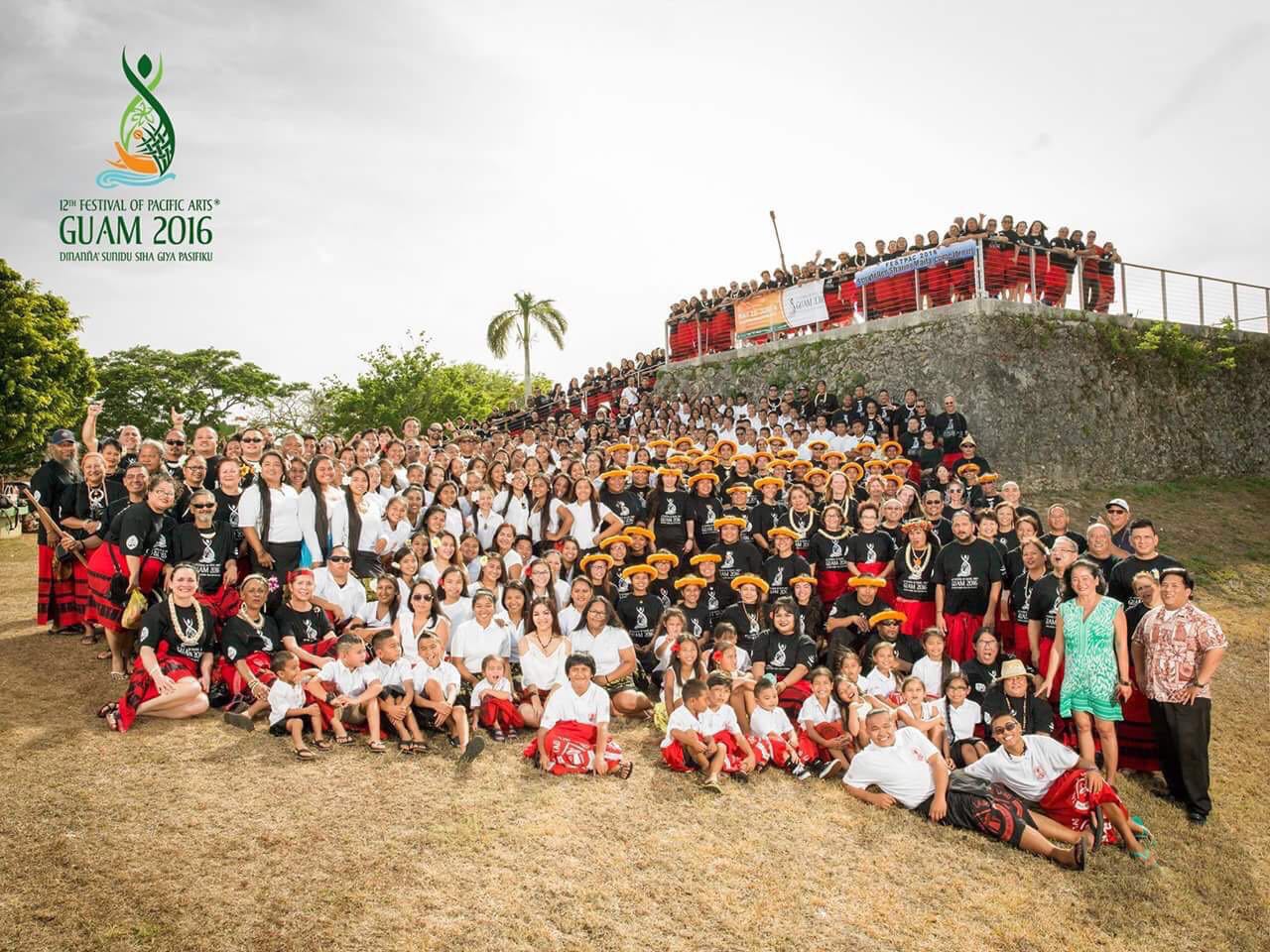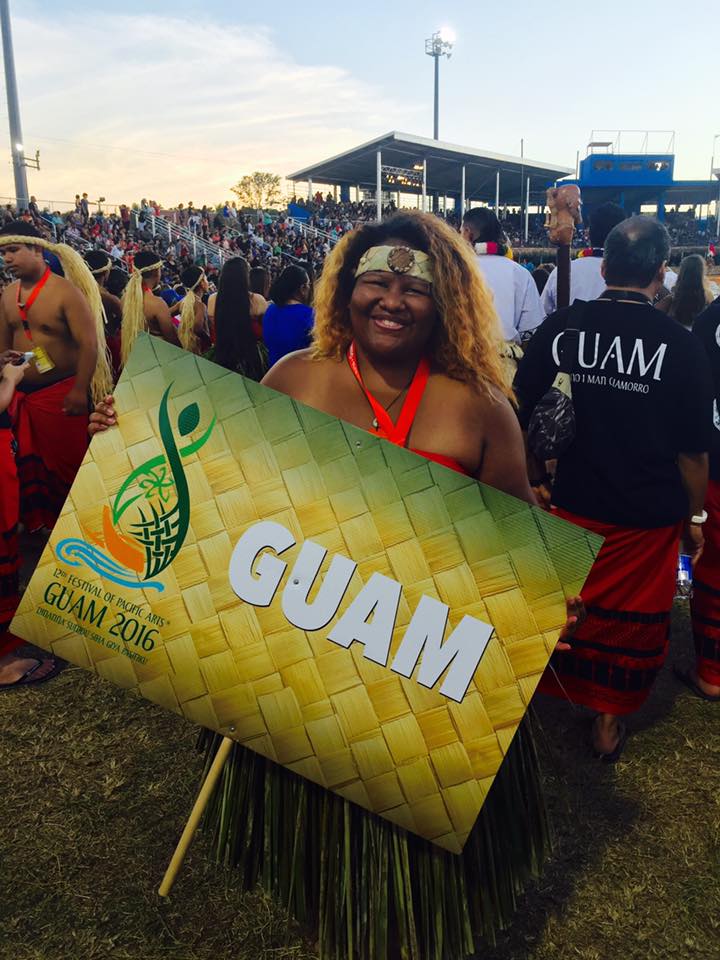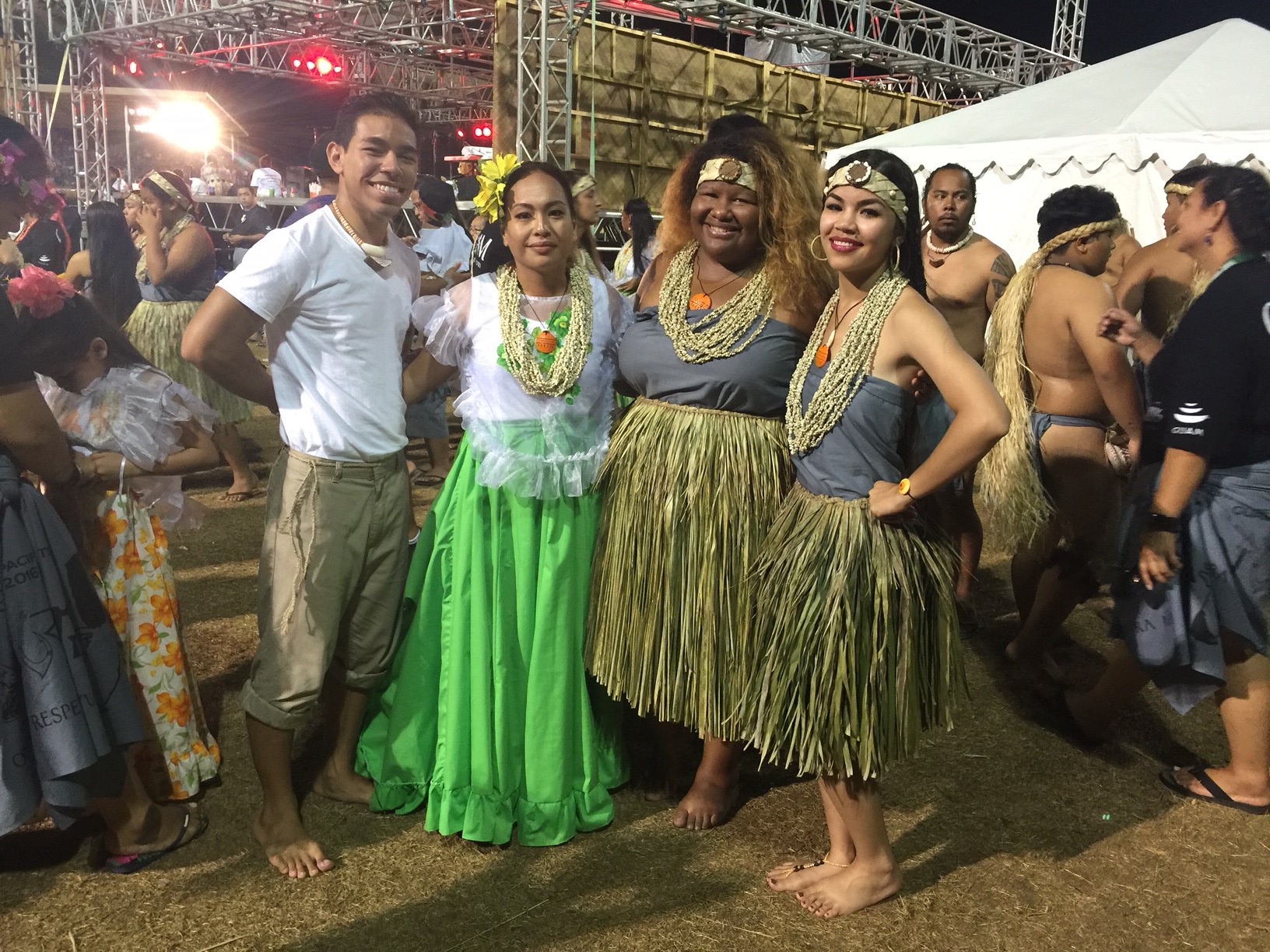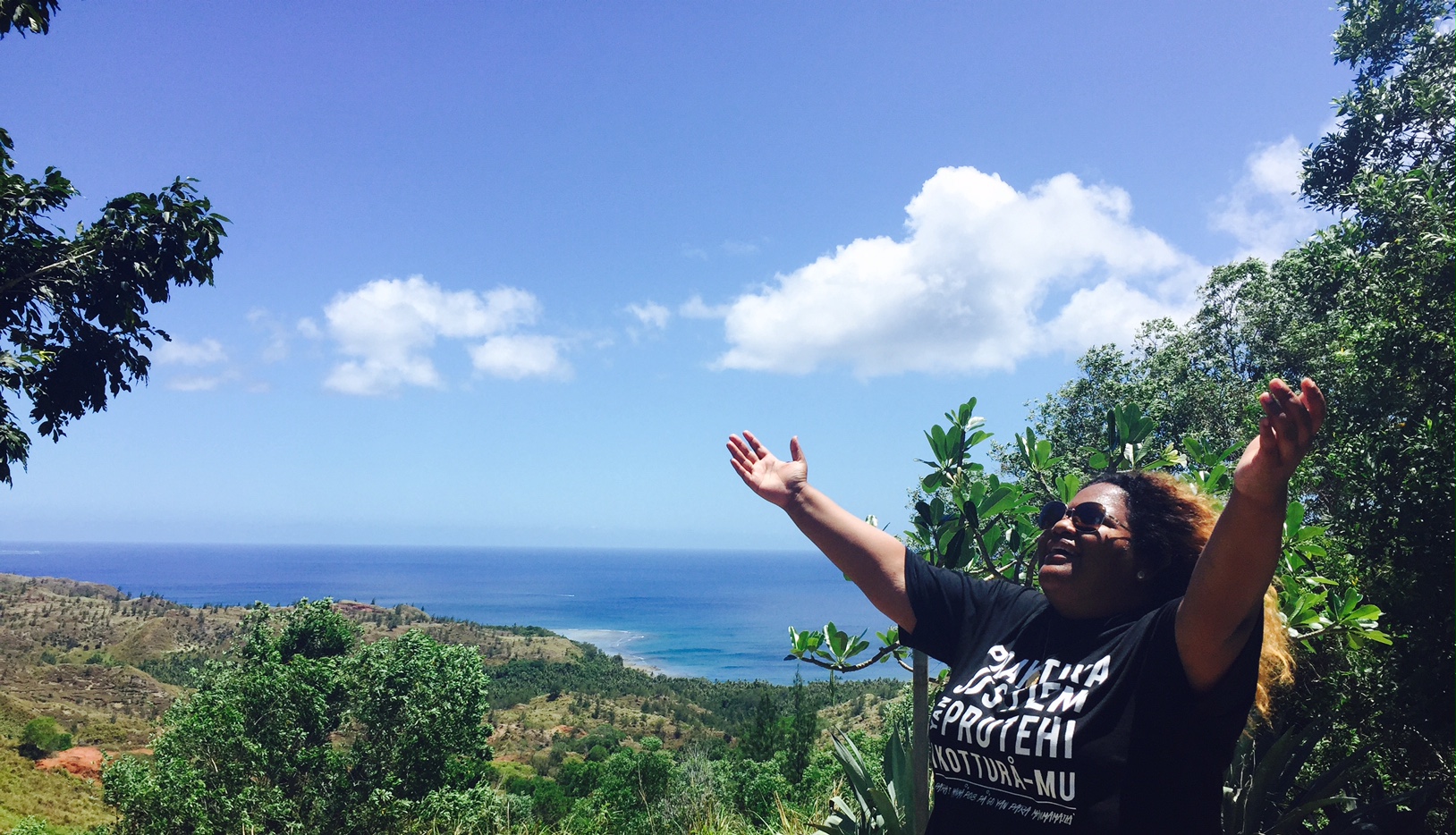Name: Teresita Guevara Smith
Formal Job Classification: Diversity Program Management Specialist
Organization: Code 100, Diversity and Inclusion Programs Office, Office of the Director
Teresita Smith is a Chamorro ‘olympian’ of the Pacific Islands and a champion of diversity at NASA’s Goddard Space Flight Center in Greenbelt, Maryland.
What do you do and what is most interesting about your role here at Goddard? How do you help support Goddard’s mission?
I have been a diversity and inclusion (D&I) specialist for almost three years. The D&I Program Office (D&IPO) provides resources, training, tools, expertise and other support to enable the Goddard community to foster and grow diversity, inclusion and equity among the workforce. We provide oversight to Goddard’s D&I Committee. We manage the Power & Privilege Training, a two-day course for supervisors and community leaders; and the Diversity Dialogue Project, in which small groups of employees discuss differences based on diversity that are encountered in the workplace. We oversee three of the nine advisory committees on Center including the Lesbian, Gay, Bisexual and Transgender Advisory Committee (LGBTAC); the New and Developing Professionals Advisory Committee (NDPAC) and the Veterans Advisory Committee (VAC). We also manage the Inclusion Ally Initiative, which advocates inclusion and equity through behavior and provides support for all people and groups.
I help manage the NDPAC and the VAC, offering guidance, oversight and strategic planning to assist the members in advocating for their constituency. I also support related educational and outreach activities.
As the communications lead for D&IPO, I oversee all the communication from our office to the Goddard community and manage our multiple websites. I also lead our D&I Directorate Road Show which teaches employees how D&I is critical to their management and mission success.
What does D&I mean to you?
D&I to me means that together we can achieve the impossible. D&I fosters innovation, the same innovation that will take us to Mars and beyond.
How do you connect with others?
I try to create an inviting, warm and welcoming work environment. It is important to care about the space I occupy, both mentally and physically, the space I invite others into, to create genuine and honest connections with others.
I am mindful of my mental space, of being positively contagious, not negatively toxic. When I embody positive energy, a friendly smile and a simple “hello,” I receive positive energy in return. Instead of quickly walking pass people, blurting out “how are you?” and walking past before they can reply, I stop, make eye contact, take a small step into their space, and then ask how they are doing. I also ask follow-up questions. I am curious about people.
I am also mindful of my physical space. I keep my door open, have a candy jar, paintings and plants in my office. I also have a white board outside my office with my thought of the day. Today’s thought is, “Smile because a smile can be contagious.”
Connecting with others is a big part of being human. People want to share their lives, their goals, dreams and challenges. I believe we all want to be seen and heard.
How do you truly listen?
Listening requires no talking and no processing of your own thoughts. Listening means putting the cell phone down and taking a step away from the computer.
It’s about sitting next to someone and giving them your undivided attention.
Listening means focusing on the person you are talking to that moment, being curious about that person and asking them questions about what they are talking about and about them.
Good listeners offer their respect and compassion to the speaker.
What is the greatest benefit of connecting and listening?
When you connect and listen, you have added another person to your tribe. You have become inclusive.
What are your passions outside of work?
Outside of work, I am very passionate about my family and our culture. I am a Chamorro with roots in Guam, a U.S. territory located in the Pacific Islands within the Mariana Islands. Guam is my mother’s birthplace.
What does being Chamorro mean to you?
Being Chamorro is the essence of who I am; it is my identity. Being Chamorro to me means family, respect and honoring rich traditions. The Chamorro people have great pride rooted from their past. We are a resilient people; we are survivors. Although I grew up thousands of miles away from the island and could not visit often, my mother passed down our people’s teachings and traditions. She raised me to know, respect, honor and be proud of being a Chamorro no matter where I live.
It means honoring my island with song anthems such as Fanoghe Chamorro, Infresi and Hinatsan I Latte.
It also means that I greet others with “Hafa Adai” (hello) and show gratitude with “Si Yu’os Ma’ase” (thank you).
It means that I love listening and dancing to cha cha music, as our Chamorro culture is heavily influence by the Spanish.
And, it means enjoying family and friends getting together at fiesta to cook and eat red rice, keleguin mannok (coconut and chicken), empanada, finadeni (a dipping sauce) and ribs.
Why is the 12th Festival of Pacific Arts (FestPac) the ‘olympics’ of the Pacific Islands?
The Conference of the South Pacific Commission holds this festival every four years, inviting representatives from 27 different Pacific Islands in the disciplines of traditional arts, literary arts, performing arts, and visual arts though demonstrations, exhibitions, forums, workshops and seminars.
This Festival is the Olympics of the Pacific Islands. Instead of competing for medals, we share and embrace cultures.
How did you become a FestPac delegate to the 12th Festival?
Since July 2015, I have been practicing traditional dance and song several days a week via video conference with a Chamorro dance group based in Long Beach, California. I have also been learning the Chamorro language through songs and chants and researching our history.
In October 2015, I auditioned before representatives of the Guam Council, who were in D.C., to be a performing arts delegate in the discipline of Traditional Dance and Song. In December 2015, I received my official selection letter from the Guam Council.
In May 2016, I was honored to be one of the 500 delegates, people who are part of the festival, and one of only 115 diaspora delegates selected outside of Guam. I was one of 30 delegates from the East Coast. I was the sole performing arts delegate from the Washington, D.C., area.
How did 202 performers become a cohesive group in only two weeks?
Two weeks before the festival, 202 performing arts delegates from around the world moved into one of Guam’s high schools to be able to rehearse together as a group.
I can still hear our fafa’na’gue (teacher) shouting, “Get on your levels! Dance from your heart!! Kakkak, lina’la, fiska, apuntan, mona, tatte (specific dance movements). Dance group A to Agat San Bautista, group B to Paseo. Don’t forget your instruments, don’t forget your places. Make Guam proud!”
We ended each performance by singing “Hinatssn I Latte,” – “O Asaina o aniti ni numai ham minesgon yan minaolek,” a call to our ancestors to honor our past, our todays and giving thanks for our tomorrows.
What did you learn from being in the Festival?
I learned more about my Chamorro culture and roots that I had to experience in person and not read about in a book. I gained an appreciation of and respect for the tano (land), the tasi (water); our people and our ancestors.
Being in the festival was a dream come true.
One of our greatest challenges is passing our language, customs, and traditions to the youth. I have learned from this experience that I want to be a part of the efforts to eliminate this challenge.
Link to view Opening Ceremony on YouTube: https://youtu.be/8g4-r2aFOZU
Link to view Closing Ceremony on YouTube: https://youtu.be/s4GJ-1AlwO4
Does NASA have a presence on Guam?
Guam has one of the ground stations for the Tracking and Data Relay Satellite System (TDRSS), a network of American communications satellites and ground stations used by NASA for space communications.
One word best describes yourself?
“Minesñgon,” a Chamorro word meaning perseverance; to keep working hard to reach your goals even when it gets difficult.
By Elizabeth M. Jarrell
NASA’s Goddard Space Flight Center, Greenbelt, Md.

Conversations With Goddard is a collection of Q&A profiles highlighting the breadth and depth of NASA’s Goddard Space Flight Center’s talented and diverse workforce. The Conversations have been published twice a month on average since May 2011. Read past editions on Goddard’s “Our People” webpage.



























